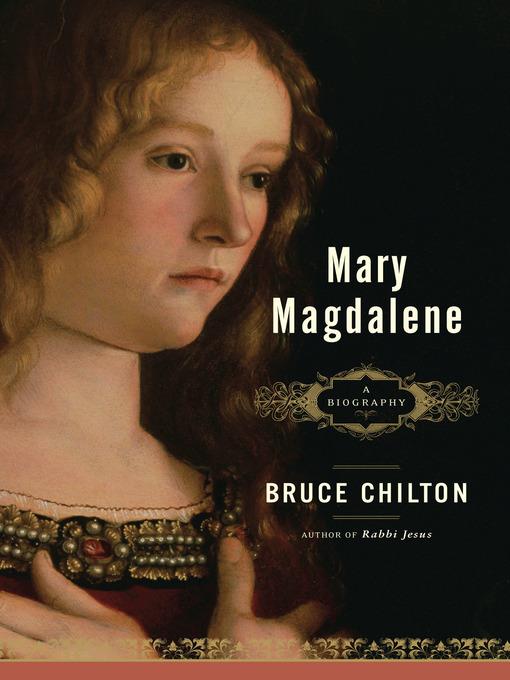
Mary Magdalene
A Biography
کتاب های مرتبط
- اطلاعات
- نقد و بررسی
- دیدگاه کاربران
نقد و بررسی

August 22, 2005
With the popularity of The Da Vinci Code
, Mary Magdalene has become the "it girl" of biblical studies. Bard professor of religion Chilton (Rabbi Jesus
; Rabbi Paul
) adds another volume to the already groaning shelves of books on the enigmatic woman. As Chilton admits, the gospels contain very little explicit information about her, but he uses what fragments are there to imaginatively reconstruct her life and world. Mary's hometown, Magdala, was a wealthy Roman outpost, but contrary to legend, there is no indication that she was affluent. In fact, as Chilton points out, she came to Jesus in the garb of the poor; she was likely demon-possessed; and she was an outcast from her community. Drawing from the gospels (especially Luke 8), Gnostic writings and later Christian legends, Chilton shows the ways in which the Christian traditions have maligned Mary. Far from being simply the prostitute of legend, Chilton argues, Mary of Magdala offers us the spiritual gifts of dissolving evil (exorcism), providing unguents for sickness and sin (anointing) and understanding the truth of Resurrection (vision). While Chilton's rather stilted book is mostly speculative and offers little new information, it offers a satisfactory survey of attitudes toward Mary from the Middle Ages to today.

November 1, 2005
Episcopal priest Chilton (religion, Bard Coll.; "Rabbi Jesus") and Roman Catholic independent scholar and feminist Starbird ("The Woman with the Alabaster Jar") provide two different views of Mary Magdalene, both of which agree about her foundational role in early Christianity as an apostle and intimate companion of Jesus. Chilton likens her to a woman possessed by demons, poor and outcast but not a prostitute and not Mary of Bethany, as much medieval legend claims. Through a careful examination of available texts (canonical gospels, the most important noncanonical gospels, and other early Christian writings) and sober speculation, Chilton traces her relationship to Jesus and claims that it was she who taught Jesus the power of vision, anointing, and touch and the disciples that Jesus had overcome death; without her, according to Chilton, resurrection might never have become a central Christian teaching. He also traces her later legend, the ambivalence of Gnosticism toward her, her medieval cult and denigration, and 20th-century reassessments.
In her book, Starbird seeks to reinstate what she believes to be early Christian teachings about sacred marriage. To her mind, Mary was wealthy, probably the sister of Lazarus (hence Mary of Bethany), Jesus' spiritual partner, and perhaps even the mother of Sarah, his putative child, who was taken away from the Holy Land for protection. Starbird documents her study well, relying less on the canonical gospels and more on Gnostic literature, "The Golden Legend", and diverse medieval sources. While Chilton's "Mary" teaches mainstream Christian doctrine, Starbird's -which includes a CD of "The Greatest Story Every Told" -leads to a more esoteric incarnation found in sacred conjunction. Chilton is highly recommended for all collections; Starbird is highly recommended for feminist collections and for all collections without her earlier books on Mary Magdalene." -Carolyn M. Craft, Longwood Univ., Farmville, VA"
Copyright 2005 Library Journal, LLC Used with permission.

October 1, 2005
The success of " The Da Vinci Code " (2003) has" " focused" " renewed attention on Mary Magdalene. Chilton, a writer experienced in biblical history, is among the latest to focus on the woman called "the apostle to the apostles." Chilton, who has previously written about " Rabbi Jesus" (2000) and " Rabbi Paul" (2004), says his goal is to use the texts but to get behind them. In Chilton's book on Paul, his own writings could be used as source material, but here Chilton has less to go on, forcing him to rely on speculation, sometimes almost ridiculously so. In reference to Mary's anointing of Jesus with her hair, for example, he writes, "Given the elegant gesture with her hair, it is more likely she pursued the proscribed profession of a hairdresser." Still, he does a good job of explaining Mary Magdalene's role in the male hierarchy and the symbol she has become in her own right.\par\par(Reprinted with permission of Booklist, copyright 2005, American Library Association.)

























دیدگاه کاربران